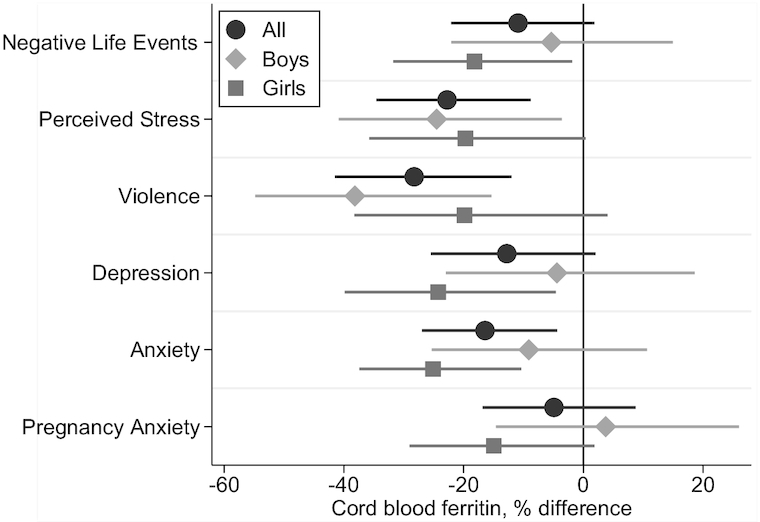FIGURE 1.

Percentage difference in cord blood ferritin at delivery in infants of mothers with high vs. low prenatal stress (negative life events, perceived stress, and lifetime exposure to violence) or psychological dysfunction (symptoms of depression, generalized anxiety, and pregnancy anxiety), overall and stratified by infant sex. Coefficients and 95% CIs are from linear regression models with log cord-blood-ferritin as the dependent variable. Models are adjusted for maternal age, socioeconomic status, iron supplement intake, and child sex (overall models only). Associations between stress and ferritin were statistically significantly different from zero (P < 0.05) for perceived stress in boys and girls combined, for depression and anxiety in girls, and for exposure to violence overall and in boys. Interaction terms for stress by infant sex did not reach statistical significance. The stress and psychological dysfunction cutoffs and scales used were: negative life event domains ≥3 on the Crisis in Family Systems (CRISYS) questionnaire; >4th quartile (= 7) on the Perceived Stress Scale-4; >85th percentile (= 0.63) on the lifetime Exposure to Violence questionnaire; depression symptoms, ≥13 on the Edinburgh Depression Scale; anxiety symptoms, greater than the median (= 18) on the Spielberger Trait Anxiety Inventory; pregnancy anxiety symptoms, greater than the median (= 19) on the Pregnancy Anxiety Scale.
